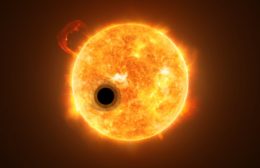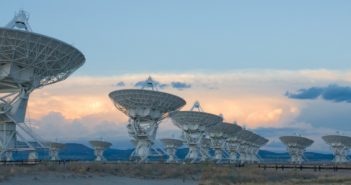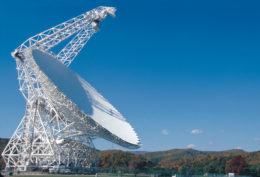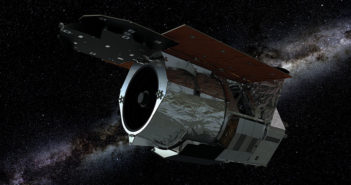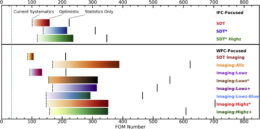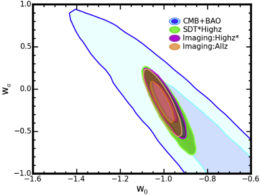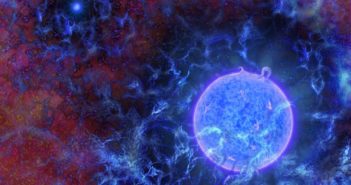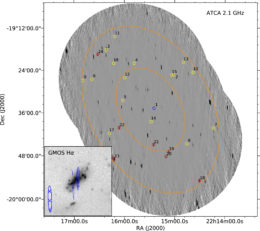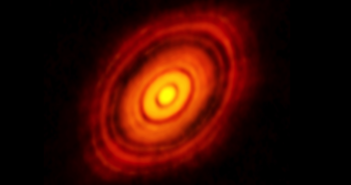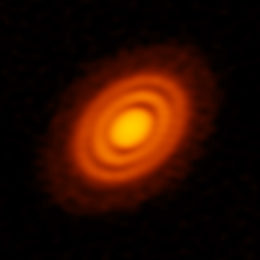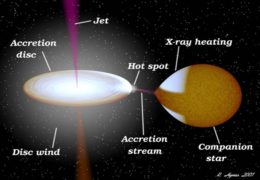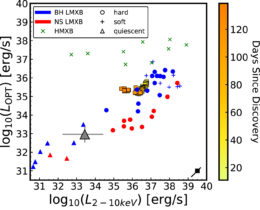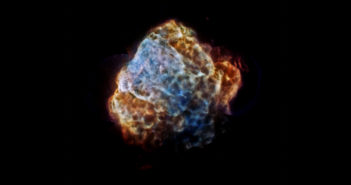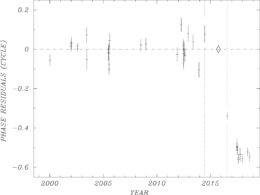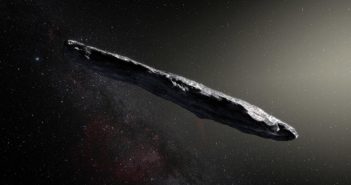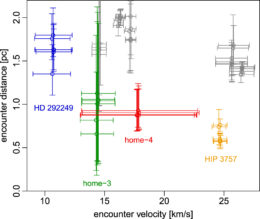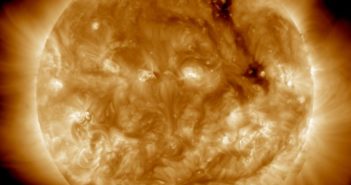
Speeding Electrons in a Solar Jet
How is energy released in explosive events like flares and jets? One of the most likely culprits is magnetic reconnection — but we still have a lot of questions about how this process works. In a recent study, radio observations of the Sun provide us with a closer look.
A Nearby Laboratory
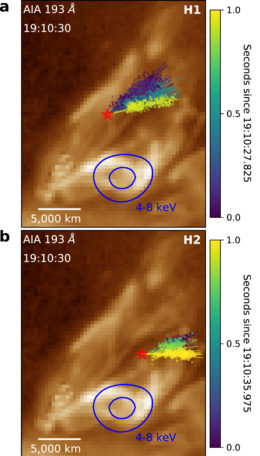
Observations of radio bursts allow the authors to trace the trajectories of electron beams (colored points and tracks) back to their common reconnection sites (marked by stars). Two different groups of beams are shown in (a) and (b). Background is the SDO/AIA 193 Å EUV image. [Adapted from Chen et al. 2018]
Unfortunately, testing this model against observations poses a challenge: most astrophysical jets — like those at the centers of active galaxies — lie vast distances away from us, preventing us from exploring the process of reconnection in detail. Thus, questions like where and how electrons get energized are difficult to answer, since we can’t easily observe the process.
There is one convenient nearby laboratory in which we can study reconnection, however: the Sun. In a new study, a team of scientists led by Bin Chen (New Jersey Institute of Technology) have used high-resolution radio observations of the Sun to pinpoint the location of magnetic reconnection and particle acceleration with greater accuracy than ever before.
Pinpointing Acceleration
Chen and collaborators used the unique capabilities of the Karl G. Jansky Very Large Array (VLA) to observe bursts of radio emission associated with a solar jet in November 2014. Radio bursts like these are emitted from groups of electrons that travel along tubes of magnetic flux at incredible speeds — between one tenth and one half the speed of light! By observing these radio bursts, the authors hoped to answer a fundamental question: where exactly did the emitting electrons first get accelerated?

Three-dimensional magnetic model of the jet eruption — during pre-eruption (left), rise (center), and eruption (right) phase — from the perspective of an observer at Earth (top) and as viewed from the side (bottom). The stars indicate the origins of the electron beams and sites of reconnection. Click to enlarge. [Chen et al. 2018]
This unprecedented localization of the electrons’ source to an area of just ~600 km2 allows Chen and collaborators to conclude that this location is a magnetic reconnection null point — a central location where different magnetic flux tubes are brought together, reconfigure, and release magnetic energy, accelerating electrons during a brief (less than 50 milliseconds!) reconnection event behind the erupting jet spire.
Chen and collaborators demonstrate that these unprecedented observations provide new constraints for magnetic reconnection models, bringing us one step closer to understanding the explosive releases of energy from magnetic structures in our universe.
Citation
“Magnetic Reconnection Null Points as the Origin of Semirelativistic Electron Beams in a Solar Jet,” Bin Chen et al 2018 ApJ 866 62. doi:10.3847/1538-4357/aadb89


